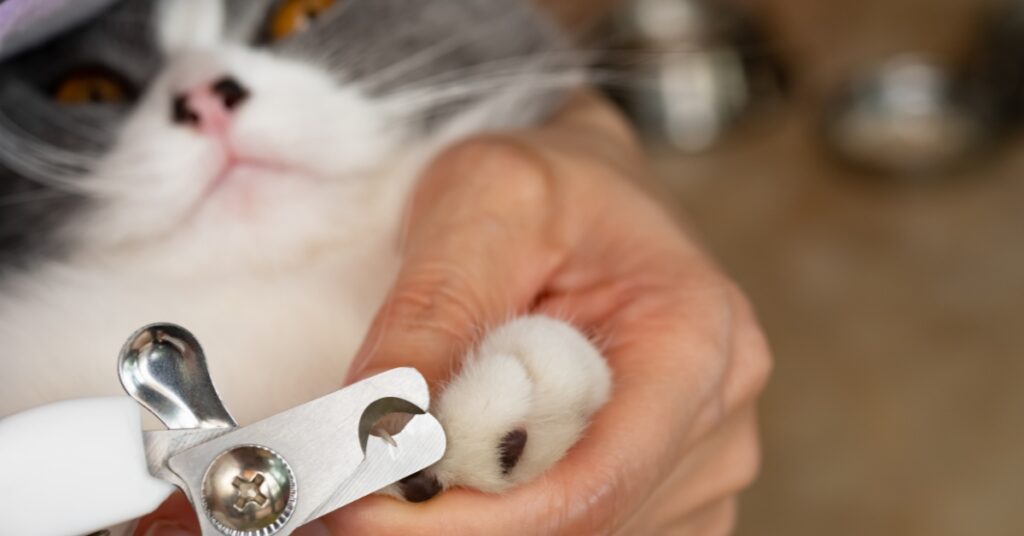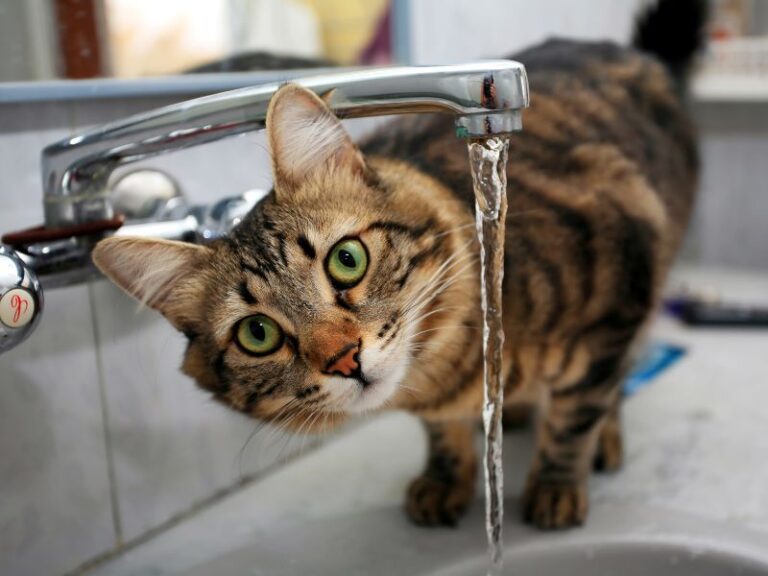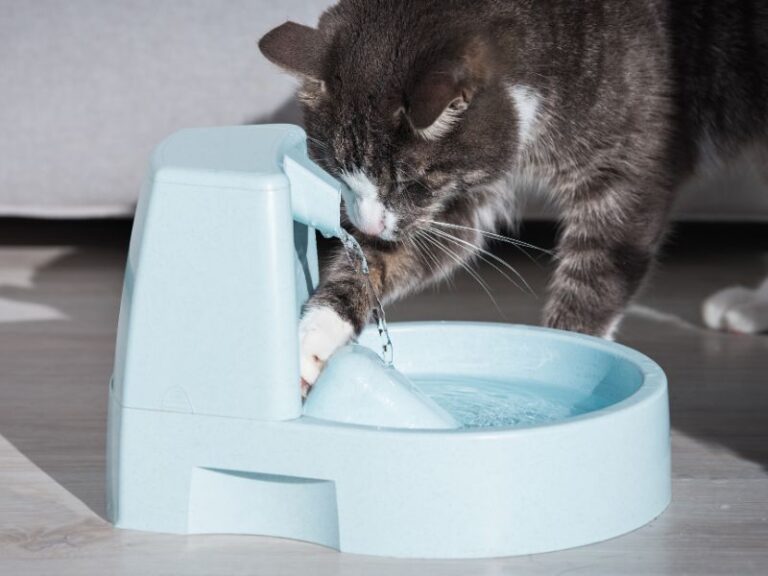Table of Contents
ToggleCats, with their endearing charm and independent nature, cats have always captivated our hearts as beloved companions. This guide will delve into the art of trimming your cat’s nails without stress. Understanding the significance of cat nail care and employing stress-reducing techniques can transform nail trimming into a positive and anxiety-free experience for both you and your feline friend. Let’s embark on this journey of love and care for our cherished feline companions.
Understanding Your Cat’s Nails
Cats are renowned for their captivating eyes, soft fur, and those adorable little paws. But hidden within those cute paws are remarkable tools that enable them to climb, scratch, and defend themselves: their nails. Understanding the intricacies of your cat’s nails is crucial for providing the best care possible. In this section, we’ll explore the anatomy of a cat’s nails, the fascinating process of their growth and shedding, and why regular nail trimming is essential for your cat’s overall well-being.
The Anatomy of a Cat’s Nail:
A cat’s nail consists of several components that work harmoniously to meet various needs. At the core is the quick, sensitive part housing blood vessels and nerves. Surrounding the quick is the hard outer sheath known as the husk, which provides protection and support. Cats have retractable claws, allowing them to keep their nails sheathed when not in use, keeping them sharp and preventing excessive wear.
Growth and Shedding of Cat’s Claws:
Unlike humans, cats’ nails grow continuously throughout their lives. As they engage in natural behaviors like scratching, climbing, and playing, the outer husk wears down, revealing new, sharp claws underneath. Additionally, cats shed the outer husk to ensure their claws remain in optimal condition. This process is essential for maintaining healthy nails, but it also means that regular trimming is necessary to prevent overgrowth and potential complications.
Why Regular Nail Trimming is Essential for Your Cat’s Well-being:
Regular nail trimming is a crucial aspect of cat care, with multiple benefits for your feline companion’s health and behavior. Keeping their nails at an appropriate length reduces the risk of painful ingrown nails and minimizes the likelihood of accidental scratches to both you and other pets. Trimmed nails also prevent your cat from getting its claws stuck in fabrics or furniture, reducing the chances of injury. Moreover, maintaining well-groomed claws can positively impact your cat’s walking and balance.
It’s important to note that cats who spend more time indoors may require more frequent nail trimming compared to outdoor cats, as they have fewer opportunities to naturally wear down their claws.

Preparing for a Stress-Free Nail Trimming Session
Preparing for a nail trimming session is crucial to ensure a stress-free experience for both you and your feline companion. By assembling the right tools and creating a calm environment, you set the stage for a successful and positive nail-trimming session. Additionally, introducing your cat to the process gradually can help build trust and cooperation. In this section, we’ll explore the key steps to prepare for a stress-free nail-trimming session with your cat.
Assembling the Right Tools and Equipment:
Before you begin, gather all the necessary tools and equipment for the nail trimming session. The essential items include:
- Cat Nail Clippers or Grinders: Choose clippers or grinders specifically designed for cats. Opt for a high-quality, sharp pair of clippers or a grinder with appropriate speed settings.
- Treats: Have a supply of your cat’s favorite treats ready as positive reinforcement during and after the session.
- Towel or Blanket: Have a soft towel or blanket on hand to gently restrain your cat if needed.
- Styptic Powder: In case of accidental nail cuts that cause bleeding, keep styptic powder nearby to help stop the bleeding quickly.
Creating a Calm and Comfortable Environment:
Choose a quiet and peaceful area for the nail trimming session. Minimize distractions, such as loud noises and other pets, to help your cat stay relaxed. Make sure the room is well-lit to ensure you can see the nails clearly during the trimming process.
Relevant >>> Cat-Proof your house – Tips for Creating a Safe Environment
Tips for Introducing Your Cat to Nail Trimming Gradually:
If your cat is new to nail trimming or has had negative experiences in the past, it’s essential to introduce the process gradually to build positive associations. Follow these tips to help your cat become comfortable with the idea of nail trimming:
- Desensitization: Start by getting your cat used to having their paws touched. Gently handle their paws while offering treats and praise to create a positive connection.
- Short Sessions: Keep the initial sessions short, focusing on positive interactions and rewarding your cat afterward.
- Step-by-Step Approach: Gradually introduce the nail clippers or grinder without actually trimming the nails. Allow your cat to sniff and inspect the tools before proceeding.
- Patience and Positive Reinforcement: Be patient and offer plenty of treats and affection throughout the process. Reward any positive behavior related to nail trimming.
By taking the time to prepare properly and acclimate your cat to the process, you lay the foundation for a successful and stress-free nail-trimming session. In the next section, we’ll explore various techniques that can be employed during the nail trimming process to further reduce stress and make it an enjoyable experience for your feline companion. Let’s continue our journey towards stress-free cat nail care!

Step-by-Step Guide for Nail Trimming
Nail trimming can be a daunting task, but with the right approach and techniques, it can become a stress-free and positive experience for both you and your cat. In this section, we’ll take you through a step-by-step guide to nail trimming, from familiarizing your cat with handling to providing post-trim comfort.
Step 1: Familiarizing Your Cat with Handling:
Before you begin the nail trimming process, spend some time familiarizing your cat with gentle handling and touching of their paws. Offer treats and praise while gently holding and touching their paws. This step helps your cat become comfortable with the sensation of having their paws touched, making the trimming process less stressful.
Step 2: Identifying the Correct Part to Trim:
The key to successful nail trimming is knowing where to cut. Examine your cat’s nails carefully, and look for the pinkish area, called the quick, which houses blood vessels and nerves. Avoid cutting the quick, as it can cause pain and bleeding. Trim only the pointed tip of the nail, away from the quick.
Step 3: Choosing the Right Moment for Nail Trimming:
Timing is crucial for a successful nail trimming session. Choose a moment when your cat is calm and relaxed, such as after a meal or a play session. Avoid attempting to trim their nails when they are agitated or in a playful mood.
Step 4: Proper Holding and Positioning of Your Cat:
Gently hold your cat in your lap or place them on a stable surface. If your cat is comfortable being held, cradle them in your arms, ensuring they feel secure. If they prefer to stay on a surface, place a non-slippery towel or blanket underneath for stability.
Step 5: Trimming the Nails with Care and Precision:
Hold the cat’s paw firmly but gently. Use the clippers or grinder to trim a small portion of the nail at a time, avoiding the quick. Take breaks between each nail to ensure your cat remains calm and relaxed.
Step 6: Rewarding Your Cat and Providing Post-Trim Comfort:
After successfully trimming your cat’s nails, offer plenty of treats and praise as a reward for their cooperation. This positive reinforcement helps create a positive association with the process. Additionally, provide your cat with comfort and affection after the session to further strengthen the positive experience.

Dealing with Difficult Cats and Nail Trimming Challenges
Nail trimming can sometimes be a challenging task, especially if your cat is uncooperative or exhibits aggressive behavior. In this section, we’ll address common challenges that may arise during nail trimming and provide helpful tips for handling difficult cats and calming anxious felines before the session. Additionally, we’ll discuss what to do if you accidentally cut the quick during the nail trimming process.
Handling Aggressive Behavior During Nail Trimming:
Aggressive behavior during nail trimming can be a response to fear or discomfort. If your cat shows signs of aggression, such as hissing, growling, or swatting, it’s essential to prioritize safety for both you and your pet. Here are some tips for handling aggressive behavior:
- Stay Calm: Keep a calm and composed demeanor to avoid escalating the situation.
- Use a Towel or Blanket: If your cat becomes too agitated, wrap them gently in a soft towel or blanket to restrict movement. Leave their paw exposed for trimming while ensuring they feel secure.
- Seek Professional Help: If your cat’s aggression persists, consider seeking assistance from a professional veterinarian or groomer experienced in handling challenging cats.
Tips for Calming Anxious Cats Before the Session:
Anxiety can make nail trimming a stressful experience for your cat. To reduce their anxiety and create a more relaxed environment, try the following tips:
- Pre-Trimming Play: Engage your cat in interactive play sessions before the nail trimming. This can help tire them out and reduce nervous energy.
- Familiar Scent: Use a familiar scent, such as a blanket or toy, to provide comfort during the session.
- Pheromone Sprays: Consider using cat-calming pheromone sprays in the room to promote a sense of relaxation.
What to Do if You Accidentally Cut the Quick:
Accidents can happen, and if you accidentally cut the quick, it’s essential to handle the situation calmly:
- Stay Calm: Avoid panicking or reacting strongly, as this can further stress your cat.
- Apply Styptic Powder: If the nail starts to bleed, immediately apply styptic powder to stop the bleeding. Dip the bleeding nail in the powder or apply it using a cotton swab.
- Offer Comfort: Comfort your cat with soothing words and gentle petting to reassure them.
- Monitor the Nail: Keep an eye on the nail to ensure it heals properly. If you notice any signs of infection or persistent bleeding, consult your veterinarian.

Alternative Approaches to Cat Nail Maintenance
While regular nail trimming is an essential aspect of cat care, there are alternative approaches to maintaining your cat’s nails that can complement or replace traditional trimming. In this section, we’ll explore the role of scratching posts and cat trees in promoting the natural wear-down of claws, the use of nail caps as an effective option for particular cats, and the benefits of seeking professional help from a veterinarian or groomer for nail care.
The Role of Scratching Posts and Cat Trees:
Scratching is a natural behavior for cats that helps keep their claws in good condition. Providing your cat with a designated scratching post or a cat tree can encourage them to scratch and sharpen their claws regularly. These surfaces offer an excellent outlet for your cat’s natural instincts and help wear down the outer sheath of their nails naturally. Place the scratching post or cat tree in areas where your cat spends most of their time, such as near their favorite resting spots or by a window with a view.
Nail Caps and Their Effectiveness for Certain Cats:
Nail caps, also known as soft paws or soft claws, are small, rubber or vinyl caps that are glued onto a cat’s claws. They act as a barrier between the claws and the environment, preventing damage to furniture and reducing the risk of accidental scratches. Nail caps are particularly useful for cats who are resistant to nail trimming or for households with small children or elderly individuals.
Applying nail caps requires precision and patience, and it’s essential to follow the manufacturer’s instructions carefully. Some cats may take time to adjust to the sensation of nail caps, but with positive reinforcement and gradual introduction, many cats adapt well to them.
Seeking Professional Help from a Veterinarian or Groomer:
If you find nail trimming challenging or if your cat has specific grooming needs, don’t hesitate to seek professional help. Veterinarians and professional groomers have experience in handling cats of all temperaments and can provide expert care in a stress-free environment.
Professional groomers are skilled in nail trimming techniques and can ensure that your cat’s nails are trimmed safely and efficiently. Additionally, they can offer insights into other grooming aspects, such as coat care and hygiene.

Final Words
Maintaining your cat’s nails doesn’t have to be a stressful endeavor. By understanding the anatomy of their nails, introducing them to the process gradually, and using positive reinforcement, you can transform nail trimming into a positive bonding experience. Regular nail care not only promotes your cat’s well-being but also fosters a deeper connection between you and your furry companion. Embrace the journey of caring for your cat’s nails with patience, love, and compassion, and enjoy the precious moments shared with your beloved feline friend. Happy nail trimming!






